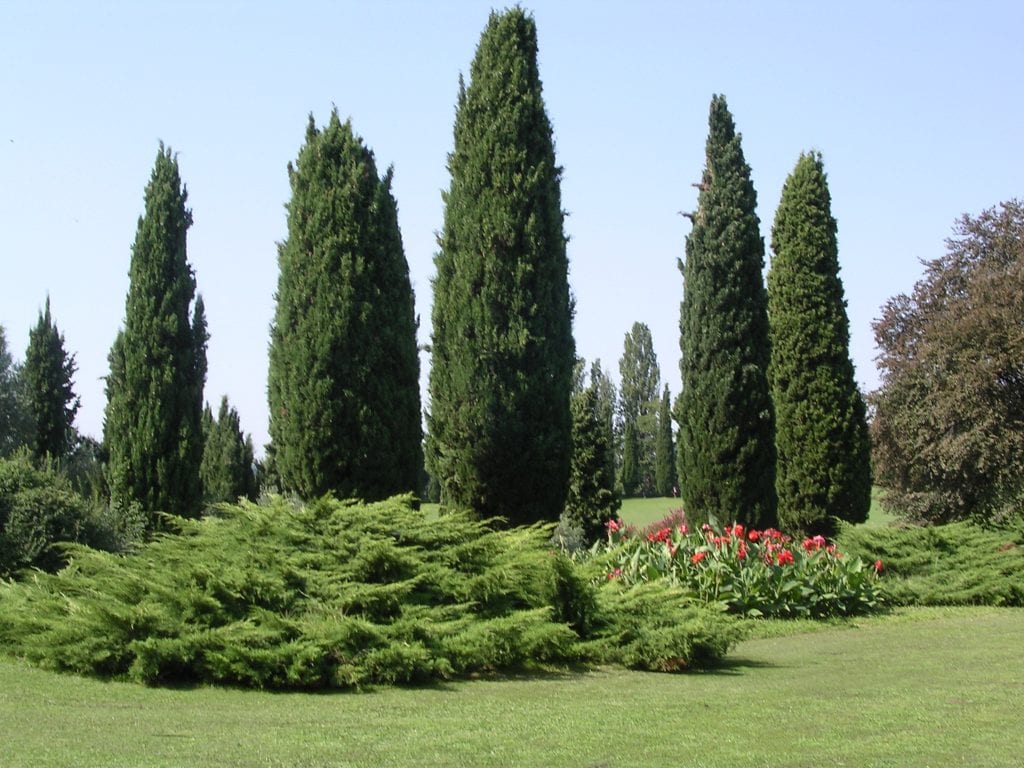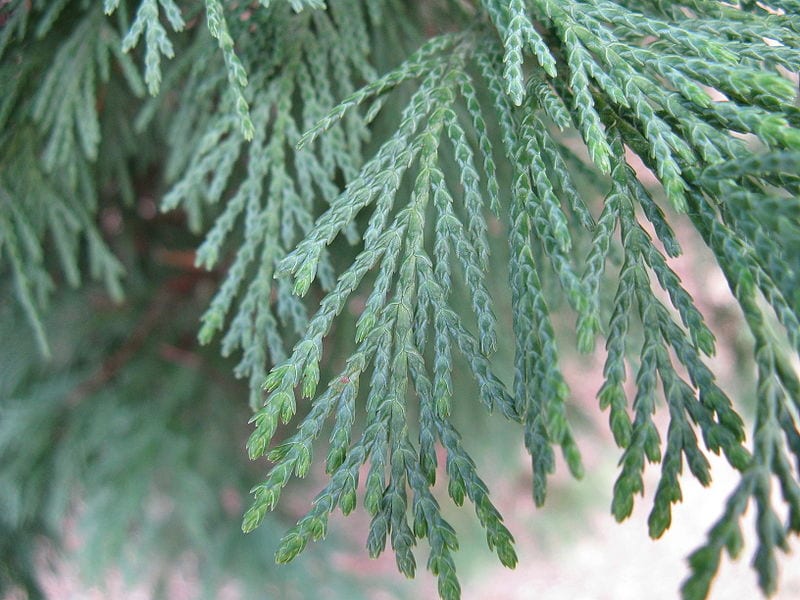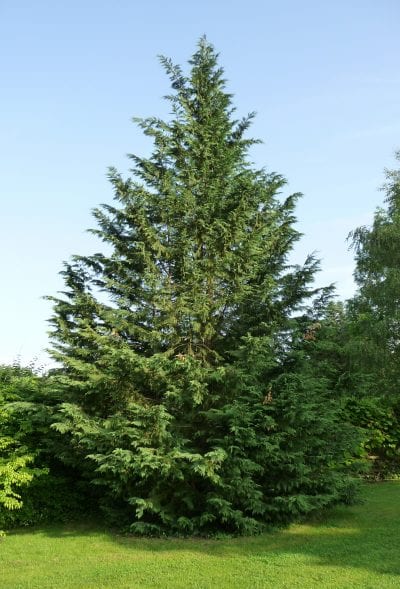
El Cupressus leylandii it is one of the most used conifers in parks and gardens. Its majesty and elegance are exceptional, giving the place an unequaled harmony. But its qualities do not end there: it remains evergreen, it is resistant to cold and frost, and it is also not difficult to care for.
As if that were not enough, it looks great when combined with other plants, be they of the same type or different, as you can see in the image. Do you want to know more about him? : )
Origin and characteristics

Image - Wikimedia / KENPEI
El Cupressus leylandii, also called by its other scientific names x Cupressocyparis leylandii o Cupressus x leylandii, and popularly as hybrid Leyland cypress, Leyland cypress, leylandi or leilandi, is an evergreen conifer hybrid between Cupressus and Chamaecyparis. It was discovered in South Wales in 1888 by CJ Leyland, but it was not until 1925 that the Royal Horticultural Society knew of its existence.
It grows to a height of between 20 and 25 meters., with a more or less pyramidal bearing and the base of its wide crown. Its leaves are scale-shaped, and are dark green on the upper side and lighter on the underside. The cones measure about 2cm and inside are seeds, which are sterile as they are a hybrid plant.
What are their cares?

Image - Wikimedia / W. Baumgartner
If you want to have a copy, we recommend you take care of it as follows:
- Location: it must be outside, in full sun.
- Earth: grows in fertile soils, with good drainage. It also does not have problems with limestone if it is grafted on the Cupressus sempervirens.
- Irrigation: 2-3 times a week in summer, and every 5-6 days the rest of the year.
- Subscriber: it is advisable to pay it in spring and summer with ecological fertilizers.
- Multiplication: by cuttings and grafts.
- Plagues and diseases: mealybugs y mushrooms. The former are eliminated with specific insecticides (anti-mealybugs) and the others with copper-based fungicides.
- Pruning: late winter. Remove dead, diseased, or weak branches, and trim those that are overgrown. It sprouts well from old wood.
- Rusticity: resists cold and frost down to -12ºC.
What did you think of the Cupressus leylandii?
The Leylandi is a very noble plant
Yes, definitely. Thanks for commenting María Mercedes.
I have a lylandi in a plot of my town, which seems dry, but these dry branches have turned green, this has already happened several times. I don't know if the neighbor has fumigated it to kill it, since on another occasion I saw the gardener put a product on it to dry it and he managed to dry two branches of the tree. How can I resurrect my tree? I'm having a terrible time because until now I was bouncing. Thank you.
Hi dove.
I recommend you talk to your neighbor to tell you why he wants to destroy your tree.
As for the plant, if those branches are still green, leave them. What I do advise you to do is pour water on it, clean it well with water (with a hose).
Regards!